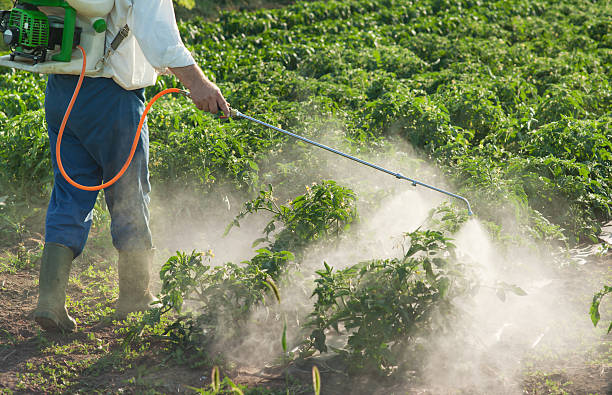METRIBUZIN

Parameter Type: Drinking Water Testing for Volatiles
Parameter Name: Metribuzin
What it is and Where it Comes From:
Metribuzin, a synthetic organic compound, is an triazinone herbicide used both pre- and post-emergence in crops including soy bean, alfalfa, potatoes, tomatoes, sugar cane, broadleaf weeds, annual grasses among vegetable crops, and turf grass. It acts by inhibiting photosynthesis by disrupting photosystem II. It is widely used in agriculture and has been found to contaminate groundwater. To evaluate risk from exposure through drinking water, EPA considered the net environmental exposure in comparison to the exposure through drinking water. For example, if exposure to a contaminant occurs primarily through ambient air, regulation of emissions to air provides a more meaningful opportunity for EPA to reduce risk than regulation of the contaminant in drinking water. In making the regulatory determination, the available information on exposure through drinking water and information on exposure through other media were used to estimate the fraction that drinking water contributes to the total exposure. The EPA also evaluated effects on potentially sensitive populations, including fetuses, infants, and children. Drinking water testing gives you several benefits like peace of mind, identifying contaminants in your water, and insight into health concerns. Safe Home offers Laboratory drinking water testing kits for metribuzin, allowing you to collect your water sample and ship it directly to our EPA-Certified Laboratory. This platform of drinking water testing for metribuzin will give you an accurate level based on the lowest level of a parameter our instruments can detect (Method Detection Level). Safe Home drinking water testing for semi-volatiles can be used for city and well water supplies. Drinking water testing should be done any time you notice a significant change in your water quality.
Health Effects:
There are no short-term studies available which report the effect of metribuzin on human health. There are no long-term epidemiological studies available which have examined the relationship between exposure to metribuzin and human health effects. Animal studies have demonstrated that metribuzin exposure induces low acute toxicity. There are no short-term animal studies available which have examined the relationship between metribuzin exposure and adverse health effects. No differences in body weight gain or food consumption were observed at any of the doses tested. However, in both male and female animals, dose-related increases in liver weight, and liver: body weight and liver: brain weight ratios, were reported. There are no studies available which correlate exposure to metribuzin with neurotoxic effects. There are no human studies available which have examined the relationship between exposure to metribuzin and cancer.
Solutions to Contaminant Levels:
After drinking water testing, what is the next step? Metribuzin can be removed by a granular activated carbon filtration system. A filter with granular activated carbon (GAC) is a proven option to remove certain chemicals, particularly organic chemicals, from water. Activated carbon is a porous material that removes organic compounds from liquids and gases by a process known as “adsorption.” In adsorption, organic molecules contained in a liquid or gas are attracted and bound to the surface of the pores of the activated carbon as the liquid or gas is passed through. Adsorption occurs on the internal surface of activated carbon, termed the adsorbent. During adsorption, liquids or gases pass through the highly porous structure of the activated carbon. The compound(s) to be removed, termed the adsorbate(s), diffuses to the surface of the adsorbent, and is retained because of attractive forces. The primary raw material used in the production of our activated carbons is bituminous coal that is crushed, sized, and processed in low temperature bakers followed by high-temperature activation furnaces. Activation develops the pore structure of the carbon. Through adjustments in the activation process, differentiated pores for a particular purification application are developed. Who do I need to contact to find out more information about water quality in my area? Every community water supplier must provide an annual report to its customers, known as a Consumer Confidence Report (CCR). The report provides information on your local drinking water quality, including the water’s source, contaminants found in the water, and how consumers can get involved in protecting drinking water. How often does the local public water system preform drinking water testing? Frequency of drinking water testing depends on the number of people served, the type of water source, and types of contaminants. Certain contaminants are tested more frequently than others, as established by the Safe Drinking Water Act. You can find out about levels of regulated contaminants in your treated water for the previous calendar year in your annual Consumer Confidence Report (CCR).


